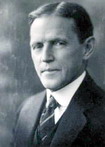The Bates Method
Introduction
The Bates Method is a method of curing imperfect eyesight, originated by William H. Bates M. D., and documented in his book Perfect Sight Without Glasses, his Better Eyesight magazines, as well as articles he published in various medical journals.
The aim of the method is to remove the bad visual habits—that is the strain to see—that underlies visual problems. This strain manifests itself physiologically in several different ways—like creating tension in the muscles that surround the eyeball, as well as in the rest of the body.
Although the findings that this method is based on, seldom have been thoroughly considered by most eye scientists, there are a lot of experimental data to back it up. The method is also solidly grounded on common sense, as well as a huge amount of testimonial evidence. People have used the Bates Method for a long time—and it works!
People with refractive errors almost always complain about tension, headaches, eyestrain aso. It isn't far-fetched to deduce that these people might have some tension in the muscles surrounding the eyeball. Tension (or co-contraction) in these muscles will cause them to apply pressure to the eyeball. It needs just simple mechanical considerations to show how this pressure can, and will, cause the anatomical changes of the eye that correlates with refractive errors such as myopia, hyperopia and astigmatism (the type of refractive error will depend on how the tension is distributed among the extraocular muscles).
It is true that some people fail with the method. As the method is educational in nature, it is difficult to guarantee a person's success or failure with it. However, if the person is able to understand and demonstrate the principles of the method, he will succeed.
The focus of the Bates Method is at removing mental strain that underlies the physical tension. All the elements of the method are simply different ways of obtaining and securing relaxation.
Principles
Central fixation means seeing best where you are looking. The eye with normal vision sees one part of what it looks at best, and everything else worse, in proportion as we move away from the point of maximum vision. In all cases of refractive errors, this functioning is lost, and the eye sees equally well, or better, away from the point of fixation. The cure of imperfect sight means regaining central fixation—not only of the sight, but of the other senses, and the mind as well.
The eyes are dependent on movement. Any attempt to fixate the eyes for more than a second or so, will result in some blur and loss of vision. That the visual sense is completely dependent on movement, is a well known physiological fact, but usually an overlooked one when it comes to regarding visual troubles.
For people with good eyesight, when they regard an object, it appears to pulsate, or to move in various directions, from side to side, up and down, or obliquely. This apparent movement is due to the shifting of the eye, and is in a direction contrary to its movement. People with good eyesight may not be conscious of this illusion, and may have difficulty in demonstrating it, but most people can, in a longer or shorter time, become aware of it. Regaining this illusion is essential in the cure of imperfect sight.
Perfect sight means perfect relaxation of the mind—and also means perfect memory and perfect imagination. When one is perfect—all is perfect. The opposite is also true. When the memory or the imagination is imperfect, the sight is imperfect. We see very largely with the mind, and only partly with the eyes. The Bates Method deals very much with improving the memory and imagination.
Techniques
Techniques involve things like:
- Practising central fixation
- Practising memory and imagination
- Conscious shifting
- Palming
- Test Card practice
- Sun treatment
- Reading small print
